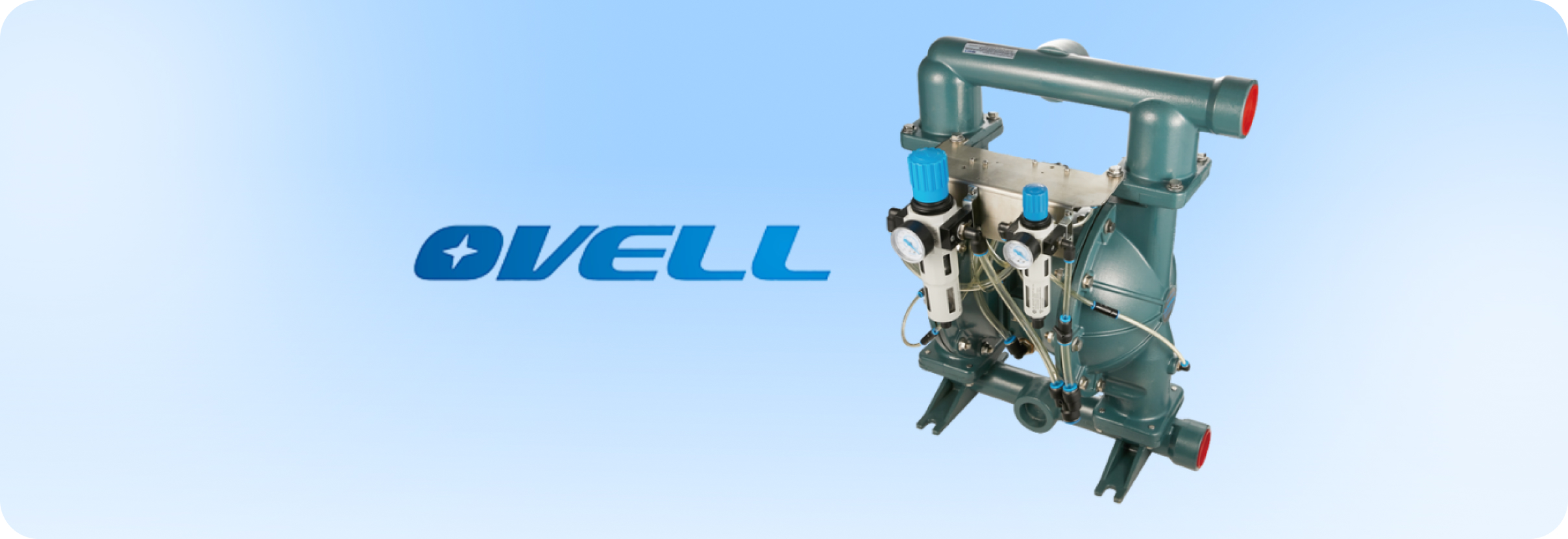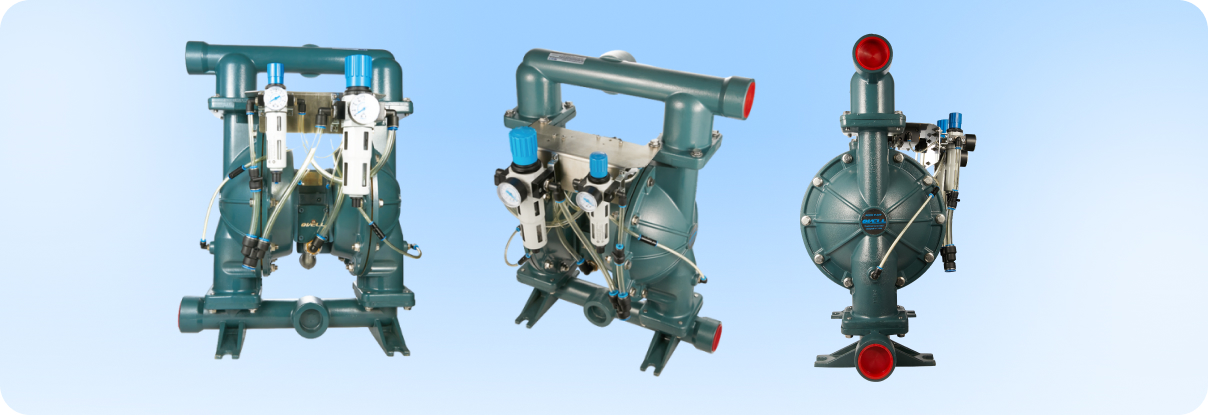
Mon - Fri: 9:00 - 19:00 / Closed on Weekends

AUS: +61 431 085 666
USA: +64 21 480 290


Across industrial environments, the safe and efficient movement of powders remains one of the most persistent engineering challenges. Materials like cement, resin, flour, pigment, and chemical granules behave unpredictably under pressure, friction, or vibration. Conventional mechanical conveyors or vacuum systems can cause blockages, degradation, or dust hazards. To address these challenges, industries are turning to a more precise and contained technology, the pneumatic powder pump.
A pneumatic powder pump uses compressed air to transfer bulk powders through sealed systems. By replacing mechanical movement with controlled airflow, it minimises shear stress, prevents contamination, and improves workplace safety. Ovell Pump, a trusted diaphragm pump manufacturer, has refined this technology through engineering precision and practical design, making powder conveying more reliable, energy-efficient, and adaptable across multiple industries.

The operation of a pneumatic powder pump is based on the controlled interaction between air pressure, vacuum flow, and powder movement. Unlike liquid diaphragm pumps, which rely on reciprocating membranes to displace fluids, powder pumps depend on alternating pressurisation and depressurisation cycles within a sealed chamber.
Core operating principles include:
By using compressed air as the motive force, pneumatic powder pumps combine simplicity and control, eliminating the need for electric motors, belts, or augers.
The performance of a pneumatic powder pump depends on its design geometry, material construction, and control system. Each part is engineered to maintain smooth transfer, tight containment, and consistent flow rate.
Key design elements include:
This design approach delivers superior containment, efficient energy use, and gentle handling compared with traditional mechanical conveyors.
At the heart of a pneumatic powder pump lies the principle of fluidisation, which is the process of making solid particles behave like a fluid by introducing air at controlled velocity and pressure.
Technical factors influencing performance include:
By mastering these parameters, pneumatic powder pumps achieve a level of precision that supports sensitive materials and high-volume production alike.
The efficiency of pneumatic powder pumps is not just a function of airflow power but of air management. In conventional systems, air consumption can be excessive or uneven. Ovell Pump addresses this through optimised valve timing and air path geometry.
Technical efficiency factors include:
As a result, pneumatic powder pumps deliver up to ten times the energy efficiency of traditional mechanical conveying systems, with lower maintenance and downtime costs.
Powder handling can pose serious safety risks, from dust inhalation and contamination to static discharge and explosion hazards. Pneumatic powder pumps offer a closed-system alternative that addresses these concerns through design integrity.
Safety-enhancing engineering features include:
These built-in safety principles make pneumatic powder pumps a preferred solution for industries that prioritise process hygiene, worker protection, and material integrity.
Pneumatic powder pumps play a crucial role across a range of industries that rely on clean, controlled powder transfer.
Chemical processing
Used to convey powders such as catalysts, resins, or pigments with high precision while maintaining containment.
Pharmaceutical and food industries
Ideal for hygienic, dust-free transfer of powders including additives, sweeteners, and active ingredients.
Mining and ceramics
Handles abrasive powders and fine minerals efficiently without wear or degradation of the pump components.
Battery and electronics manufacturing
Transfers sensitive powders used in cathode precursor and coating processes without contamination or particle damage.
In each sector, the ability to move powders safely, consistently, and without environmental release provides measurable improvements in process efficiency and quality assurance.
Ovell Pump is a leading diaphragm pump manufacturer committed to delivering reliable, energy-efficient, and safe pumping solutions. With more than a decade of expertise in pneumatic and diaphragm pump design, Ovell serves industries such as chemicals, food and beverage, pharmaceuticals, mining, and wastewater treatment.
Its product line includes air operated double diaphragm pumps, electric diaphragm pumps, diaphragm metering pumps, and specialised models such as pneumatic powder pumps, booster diaphragm pumps, and flap valve diaphragm pumps.
Ovell’s pneumatic powder pump is designed for effortless setup, high portability, and gentle material handling. Capable of conveying up to 4.5 tonnes per hour and reaching 30 metres in height, it provides a secure, leak-proof, and maintenance-friendly solution for a wide range of powder materials.
Through continuous design improvement and attention to safety, Ovell Pump ensures each product performs reliably across demanding industrial environments.
In modern industrial systems, the pneumatic powder pump represents a balance between engineering simplicity and technical sophistication. Its ability to transfer powders through controlled air cycles provides a safe, efficient, and low-maintenance alternative to mechanical conveying.
By understanding the science of airflow, pressure dynamics, and material behaviour, Ovell Pump has developed pneumatic powder pumps that meet the industry’s growing demand for precision and safety. These systems embody the core principles of modern process design, including containment, efficiency, and reliability, while aligning with broader sustainability and operational goals.
With its commitment to engineering excellence, Ovell Pump continues to lead the evolution of powder handling technology, ensuring that every movement of material contributes to cleaner, safer, and more efficient production.